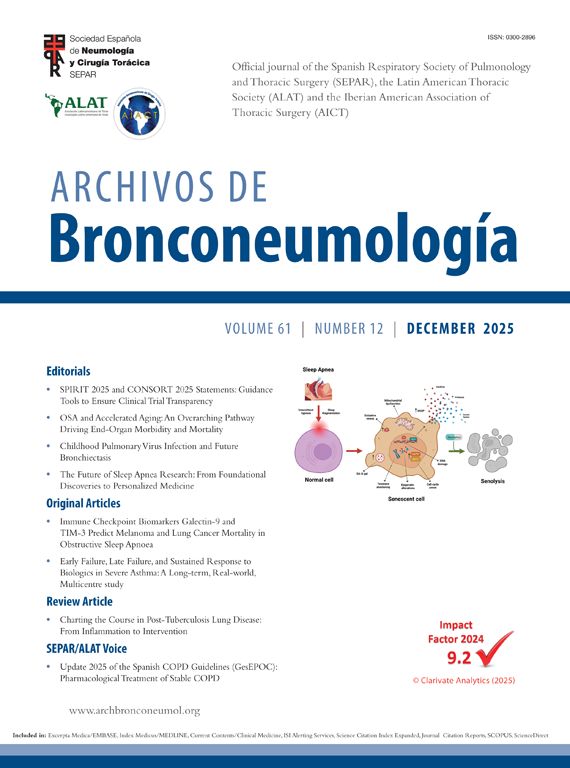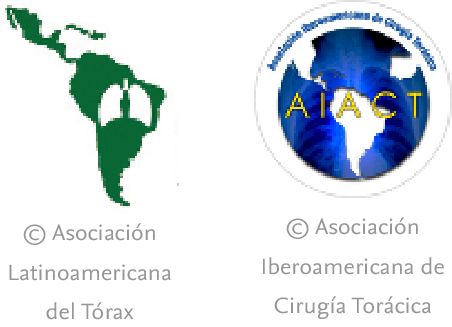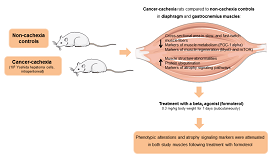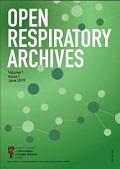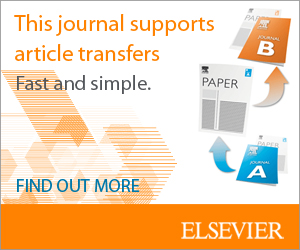Neurophysiologically, central sleep apnea (CSA) is due to a temporary cessation of respiratory rhythmogenesis in ponto-medullary respiratory networks [1]. Central apneas occur in a number of disorders including a variety of cardiovascular diseases [2] and medications such as opioids, and ticagrelor used in the treatment of acute coronary syndrome [3]. Overnight, CSA results in arousals, desaturation and negative swings in intrathoracic pressure during hyperventilation with potential for long-term pathophysiological cardiovascular consequences [2,3].
Although CSA is a rare polysomnographic finding in the general population, it is frequently observed in heart failure (HF), particularly in those with HF and reduced ejection fraction (HFrEF) [1,2]. Diagnosis and treatment of CSA may improve quality of life, morbidity, and mortality. In this invited editorial, we discuss recent developments in the treatment of CSA in HFrEF (adaptive servo ventilation, ASV; and phrenic nerve stimulation, PNS) [1,2,4–6].
Because the prevalence and the severity of the CSA disorder is based on the threshold of a combination of central apneas plus central hypopneas index (CAHI), it becomes clinically relevant to correctly distinguish subtypes of hypopneas, as these events are frequently and potentially erroneously categorized as obstructive underdiagnosing central events [7].
ASV for treatment of CSA in HFrEF. Although many clinical studies have shown efficacy of ASV for treatment of CSA in HFrEF [8], currently in the US, the use of ASV in HFrEF is contraindicated (see below). Similarly, the European Cardiology Society guidelines on HF state that the use of ASV in patients with HFrEF and predominantly CSA is not recommended (https://doi.org/10.1093/eurheartj/ehab670). The contraindication was based on the largest trial of almost 1300 well treated patients with HFrEF [9], randomized to first generation ASVmv (mv=minute ventilation) or medical therapy. Surprisingly, compared to the control treatment with ASVmv resulted in increased CV mortality. The investigators suggested that either CSA is protective, or alternatively, ASV imposed excess intrathoracic pressure within the thorax, impairing cardiac function. We had previously suggested that indeed this was potentially the reason for failure of the Canadian CPAP trial [10]. In this context, we note that positive intrathoracic pressure has a double sword adverse effect to right ventricular function, by decreasing the preload (the venous return to the right ventricle) on one hand, and increasing afterload (positive pressure increases lung volume which causes increased pulmonary vascular resistance), on the other hand. These adverse effects are particularly vulnerable if the right ventricle is preload dependent, and in the presence of combined pulmonary hypertension in patients with HFrEF. In addition to this adverse hemodynamic effect, the algorithm of the ASVmv used in the SERVE-HF trial had fixed EPAP and aggressive inspiratory pressure support. The former was incapable of preventing upper airway occlusion which became prevalent during the trial, and the latter caused pathophysiologically large intrathoracic pressure and excessive ventilation described in detail previously [11]. While on ASVmv, presence of a large amount of residual obstructive events was associated with clinically significant nocturnal desaturation which is a well-known prognostic predictor of mortality in patients with HFrEF and sleep apneas [12]. In addition, we suggested that excess ventilation could have resulted in hypocapnia, alkalemia and hypokalemia leading eventually to arrythmias [11]. We therefore propose that the combination of residual hypoxemia added to increased intrathoracic pressure and ventilation resulted in excess cardiovascular mortality with the use of ASVmv.
Our assumptions appeared to be true. In this context, the most recent trial, using an ASV with advanced algorithm, ASVpf (pf=peak airflow) with automatic EPAP to treat CSA in HFrEF patients did not show increased CV mortality, but on the contrary showed a non-significant trend towards improved survival which appears to be statistically significant when compared to ASVmv [13]. Unfortunately, this trial was stopped prematurely in part because of the Covid pandemic with less than 200 HFrEF patients in control and ASV arms VS. at least 430 patients initially planned to be enrolled. Currently, ASVpf is unavailable in the US, because of insulation issues.
Three organizations [4–6] have addressed use of ASV in HFrEF ≤45%. The European Respiratory and Sleep Research societies state “In HF with predominant CSA with LVEF ≥30%, the panel initiates ASV treatment in expert centres, and also with LVEF <30% in a palliative care setting, despite lacking scientific evidence, the members of the panel sometimes use ASV in highly symptomatic patients if “there is no other option to reduce symptom burden”. However, there are other options to treat CSA in HFrEF, and at least in the US use of ASV remains contraindicated, discussed below.
The American Academy of Sleep (AASM) Medicine guidelines [6] state “using ASV over no ASV in adults with CSA due to the following etiologies: primary CSA, CSA due to heart failure …” This statement includes both subtypes of HF. An additional remark states “caution in using ASV for CSA treatment in patients with HFrEF by recommending regular monitoring in specialized sleep centers with expertise in these devices”. As noted above, use of ASV in US to treat CSA in HFrEF is contraindicated.
The third, the American Thoracic Society [4] states that use of ASV to treat CSA in HFrEF with LVEF ≤45% is contraindicated. This ATS recommendation remains unchanged based on the current FDA Device website.
In contrast to statement in guidelines, there is an FDA approved option for treatment of CSA in HFrEF patients. Based on the remedē® System Pivotal Trial [14], unilateral PNS was approved in 2017, and has shown proven efficacy in improving CSA and its consequences, including arousals, oxygen desaturation, increased sympathetic activity. In addition, in a subset, LVEF increases significantly [15]. Currently, PNS could be used for treatment of CSA in HFrEF not responding to CPAP with AHI remaining above 15/hour of sleep and LVEF ≤45%. However, a large RCT with hard outcomes has not been reported.
Referring to the SERVE-HF, one of the guidelines [6] states “Cheyne-Stokes respiration may be a compensatory or less harmful form of CSA or SDB, potentially explaining the results of a trial evaluating ASV in CSA that did not show clinical benefit.” The opposite is more plausible: it is clear from multiple studies that in HFrEF, CSA is associated with overnight adverse consequences such as increased sympathetic activity, premature hospitalization and mortality, as reviewed elsewhere [16]. And notably, if CSA is protective, why should the ADVENT-HF using the updated ASV, showed beneficial, and perhaps statistically significant benefits compared to first generation ASVmv [12].
Time has come for a new trial. Given the encouraging results of the ADVENT trial and the upgraded ASVpf, and ASVmv algorithm, time has come to design a RCT using the new ASV devices in patients with HFrEF and predominantly CSA. Based on the results of the ADVENT trial, and also the LOFT HF trial (Impact of Low Flow Nocturnal Oxygen Therapy on Hospital Readmission/Mortality in Patients with Heart Failure and Central Sleep Apnea) [17], it appears that not as many number of patients enrolled in the initial SERVE-HF trial is needed. Perhaps between 500 to a total of 1000 participants. This is a trial that could be done with cooperation of the manufacturers of ASV devices. In the absence of such a trial, cardiologists are unwilling to have their patients be referred for sleep studies and be treated with ASV. As a result, many patients with HFrEF either with obstructive or central sleep apnea are deprived of a treatment that could improve the life of such patients.
Similarly, given the success of PNS, and that it is a physiological treatment of CSA, not increasing intrathoracic pressure and with full adherence, a trial with hard outcomes is needed. Taken together, these considerations highlight the urgent need for continued, well-designed translational and clinical research to refine therapeutic strategies for CSA in HFrEF and ultimately improve outcomes in this vulnerable population. Well-designed pharmacological therapies to treat CSA are also needed, but beyond the scope of this editorial.
Conflict of interestShahrokh Javaheri: Consultant to Zoll-Respicardia.
Alberto Giannoni: None declared.
Winfried J. Randerath: received personal fees for lectures, participation in advisory boards and travel grants related to sleep medicine within the last 24 months from Löwenstein Medical, Philips, Westfalen Medical, Resmed.

